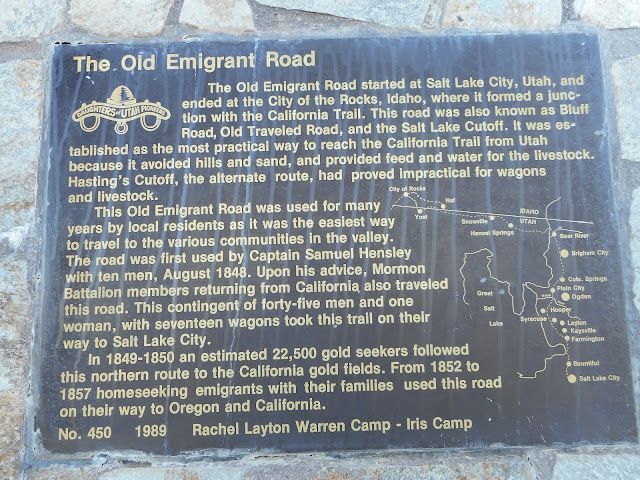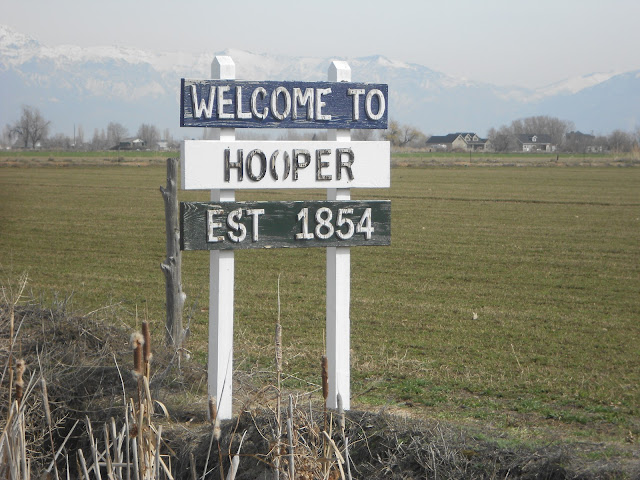Looking west along the Ideal Beach shoreline.
ALMOST 57 years before Sweetwater development company
came to Bear Lake Valley, Ideal Beach at Bear Lake began and prospered. As it
turns out, Ideal Beach has about 110 years of "rich" (in Rich County) history. Who knew that the
resort is so long-standing!
“The Ideal Beach at Garden City attracts visitors from
all points of the compass,” The Logan Journal newspaper of June 29, 1915
declared, in what is the first media reference to the resort.
Getting to the resort – and even Bear Lake—in 1915 was
no easy task. In fact, Boy Scouts in the summer of 1915 took a train from Ogden
to Logan and then hiked more than 40 miles over the mountains, so they could
camp at Ideal Beach, one of the biggest recreational developments on the lake
at the time. (Ogden Standard-Examiner, August 10, 1915.)
“Ideal Beach on Bear Lake destined to become leading
resort,” a headline in the Logan Republican newspaper of August 19, 1915,
boasted. The resort had 21 tents and featured dancing each evening. The resort
then, an always, was pretty much in the same location, the southwest corner of
Bear Lake. That’s where there was a
sandy beach and wind and weather was as good as it gets along the lakeshore.
However, again, getting to Bear Lake was a trial in 1915, as it required 3 ½
hours of auto travel, just from Logan.
“Ideal Beach is the place for summer outings,” the Logan Republican stated on June 26, 1917. The resort back then had 42 cottages and tents, a café, 21 rowboats, two canoes and several motor boats. It even had a shooting galley, tennis court and an ice cream parlor. The Ole Reeves Jazz Orchestra provided the music for evening dancing and entertainment.
In 1925, the Bluebird Orchestra from Logan, was the
music provider. That year, the resort offered free use of their campgrounds.
By 1951, Ideal Beach even had roller skating in the
summer and ice skating in the winter. Rates were $15 a week for a cabin rental
then.
Big changes began at Ideal Beach in 1972, when
Sweetwater development purchased the resort. This was the beginning of the
timeshare era and the 2-by-4 cabins were razed and the circular skating rink
was remodeled into condominiums (and even now still has a circular shape). By 1977, Sweetwater offered four weeks of use
for a timeshare with a price tag of $50,000.
By 1982, Sweetwater/Ideal Beach had 4,700 timeshare
owners and 106 condos, 90 of which were public.
Five years later, in 1987, the timeshare owners, who
had not been satisfied with the management of Ideal Beach, brokered a deal and
began ORE company to management their timeshares at not just Bear Lake, but
other recreational properties in the Intermountain West., that totaled some
13,000 owners.
The condos as they appear looking south from the beach.
Today it is Bear Lake Timeshare that is one company
that offers investments at Ideal Beach, while IdealBeachResort.com manages
rentals and also the sale of individual condos. The resort itself is governed
by a homeowner association and a board of directors.
With a huge
lawn space, great for all kinds of games, the resort is very family friendly
and has a large playground too. It offers mini golf, has two swimming pools and
tennis courts. The resort has a general store too, complete with ice cream and
some clothing. Seasonally, jet skis and other aquatic rentals are available at
the beach, maybe 150 yards from most condo units.
The resort’s
email is: info@idealbeachresort.net
and the telephone number is (435) 946-3364.
NOTE: The
author has been vacationing at Ideal Beach most summers for the past 20 years,
as a guest renter. He has no other connection or financial ties to Ideal Beach.

































